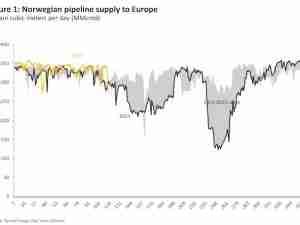Iran’s Crude-Oil Exports Surge Just Days Before Freeze Talks
By: Julian Lee | Apr 14 2016 at 10:47 AM | International Trade
Iran’s crude shipments have risen by more than 600,000 barrels a day this month, adding to the pressure facing producer nations as they prepare to meet in Doha to discuss freezing output to prop up oil prices.
Tankers carrying about 28.8 million barrels of crude, or more than 2 million a day, left the Persian Gulf country’s ports in the first 14 days of April, according to tanker-tracking data compiled by Bloomberg. That compares with a rate of about 1.45 million barrels a day in March.
Iran was freed from wide-ranging sanctions in January, allowing it to add barrels to an already oversupplied market. Saudi Arabia, Russia and more than a dozen other producers are gathering in Doha on April 17 to discuss a plan to cap output at January levels. Saudi Deputy Crown Prince Mohammed bin Salman has said his country will only limit its supply if Iran does likewise.
China will be the biggest recipient of Iranian crude loaded so far this month, while flows to Japan are resuming after halting in March, the tracking data show.
The resurgence in Iranian shipments comes after deliveries from other members of the Organization of Petroleum Exporting Countries dropped last month amid supply disruptions. Nigeria and Iraq saw a combined decline of 90,000 barrels a day, according to the International Energy Agency.
Rebalancing Prospects
The Iranian volumes highlight that a rebalancing of the market will have to come primarily from countries outside OPEC, provided that crude prices don’t rise too far, said Ole Hansen, head of commodity strategy at Saxo Bank A/S. If Iran “can keep up sales of that magnitude during the coming months when supply disruptions from northern Iraq and Nigeria begin to fade, we may have to look a bit further out for that rebalancing,” he said.
The price of benchmark Brent crude has rebounded by more than 35 percent since mid-February when Saudi Arabia and Russia, the world’s two biggest oil producers, first signaled their willingness to cooperate on freezing output.
The IEA said Thursday it expects the global oil surplus to almost disappear in the second half of this year, with the glut dwindling to 200,000 barrels a day from 1.5 million in the first six months.










